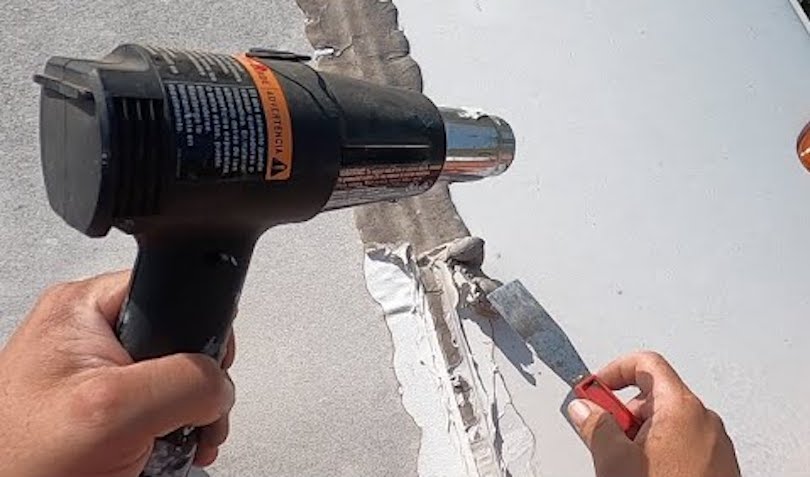How to Remove Old Caulk From Windows
Good caulking around windows ensures there is no damage to your homes and properties. Sealing cracks, weatherproofing the building, and avoiding many external threats including water penetration are all covered by caulking around the windows. But caulk comes with a shelf life of 5-7 years. after that, you have to replace it. Since an outdoor caulk bears the weather exposure, it typically only lasts 3-5 years. Water damage to the window sill is more likely if you don’t replace it. So, how to remove old caulk from windows?
Whether you want to replace an old window or want to caulk all the cracks surrounding windows, removing the old caulk sealant will make sure the new caulk will perform its job of efficiently preventing heat leaks.
Caulk Removal From Window Frames
![]()
Whether you want to replace an old window or want to caulk all the cracks surrounding windows, removing the old caulk sealant will make sure the new caulk will perform its job of efficiently preventing heat leaks. Find out about the subsequent stages below.
Soften Your Dried Caulk
You must first soften the caulk in order to remove it with a putty knife or pliers. You run the danger of harming the window sill if you try to remove the caulk without first softening it or without removing all of it. Heat or the application of a chemical agent to compromise the caulk sealant’s strength are the two best ways to soften dried caulk off window frames.
Apply Heat For Softening Caulk Sealant

The main step in this technique is to soften the old caulk from window frames using a heat gun or a hairdryer. It typically takes a greater level of competence because a small error could seriously injure the window sills or possibly harm you. So keep in mind to use caution when employing this strategy.
Also Read: How to Remove Dried Caulk From Hands
Heat from the hairdryer will help to soften dried caulk sealant. Set the hairdryer to high and keep it 6 inches away. The putty should transform into a workable clay-like substance for removal in about 30 seconds. However, you might need to use a chemical compound if the heat from the hairdryer and heat gun does not start to soften the old caulk.
Caulk Sealant Softening with Chemical Compounds
There are various alternative chemical options to use if heat is ineffective. The essential component of this approach is the application of any recognized caulk-removing solvents, such as vinegar, rubbing alcohol, and occasionally warm water. In order to soften caulk, you typically need to massage it down by dipping a cloth in a solution of vinegar or rubbing alcohol. When applying the solution, be careful to wear gloves to prevent contact with your skin.
Cleaning the Windowsill and Removing the Old Caulk
The pliable caulk can be removed in a number of different methods. To remove the old caulk, you can use pliers, utility knives, or putty knives. The first two can be used for peeling and stripping, while pliers are appropriate for caulk that has numerous layers. You need to use caution when handling this equipment because they are especially sharp.
There will still be caulk residue after the caulk has been largely removed. Before adding a fresh layer of caulk, make sure to clean this off. Caulk residue frequently impairs the efficiency of the newly applied sealant if it isn’t removed. Sand hardwood window sills with sandpaper, and metal window frames using a brush.
Wash the window sill with soap and water after cleaning and scrubbing. You can reapply the caulk when it has fully dried, ideally on a warm bright day.
Apply New Caulk
Now that you know how to remove old caulk from windows, you also need to consider applying new caulk to windows. Consult a professional if you’re unclear of how to apply new caulk. Your home may experience leaks and water damage if caulk is applied incorrectly.
